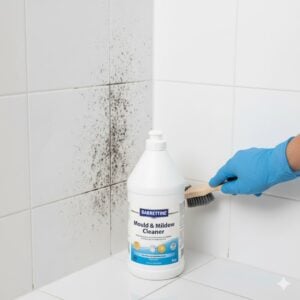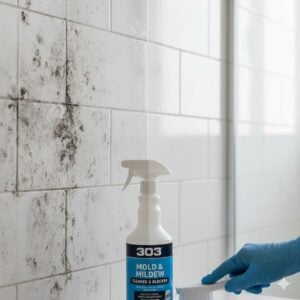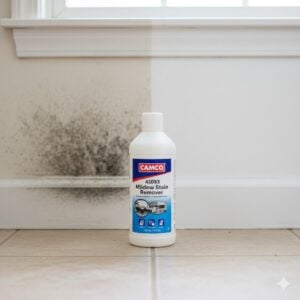We’re diving deep into a topic that’s both common and concerning for many: food mold. Food mold isn’t just an unsightly annoyance; it can be a sign of deeper issues affecting your health and well-being. Understanding the signs that food mold is impacting your health and knowing the right solutions can make all the difference. It’s not just about discarding spoiled food; it’s about ensuring your environment supports your health. Let’s explore the tell-tale signs and what you can do to combat this silent intruder.
Table of Contents
ToggleSign 1: Allergic Reactions and Sensitivities

Consuming moldy food can trigger allergic reactions and sensitivities in some individuals, leading to a range of symptoms that can affect their daily lives. The most common signs include sneezing, coughing, nasal congestion, itchy eyes, and skin rashes. These reactions are the body’s defense mechanism against the spores that molds release, which are recognized as foreign invaders. Certain molds, such as Aspergillus, Penicillium, and Cladosporium, are more likely to cause these allergic responses.
The severity of symptoms can vary greatly depending on an individual’s sensitivity and the type of mold ingested. For some, the reaction might be mild and manifest as a slight rash or a few sneezes. However, for others, especially those with pre-existing conditions like asthma or severe allergies, consuming moldy food can lead to more severe health complications, such as asthma attacks or anaphylaxis, a potentially life-threatening condition.
To minimize exposure to food mold and its potential allergic reactions, it’s crucial to:
- Regularly inspect food items for signs of mold before consumption, especially those prone to mold growth like bread, cheese, and fruits.
- Store food properly in airtight containers and refrigerate perishables to slow down mold growth.
- Maintain cleanliness in areas where food is stored or prepared to prevent mold spores from spreading.
Understanding these triggers and taking proactive steps can help manage and reduce the risk of allergic reactions caused by moldy food. For individuals with known sensitivities, it’s also advisable to have antihistamines or other allergy medications on hand as a precautionary measure. In cases where allergic reactions are severe or persistent, consulting a healthcare professional is essential for proper diagnosis and treatment.
Sign 2: Respiratory Issues and Complications
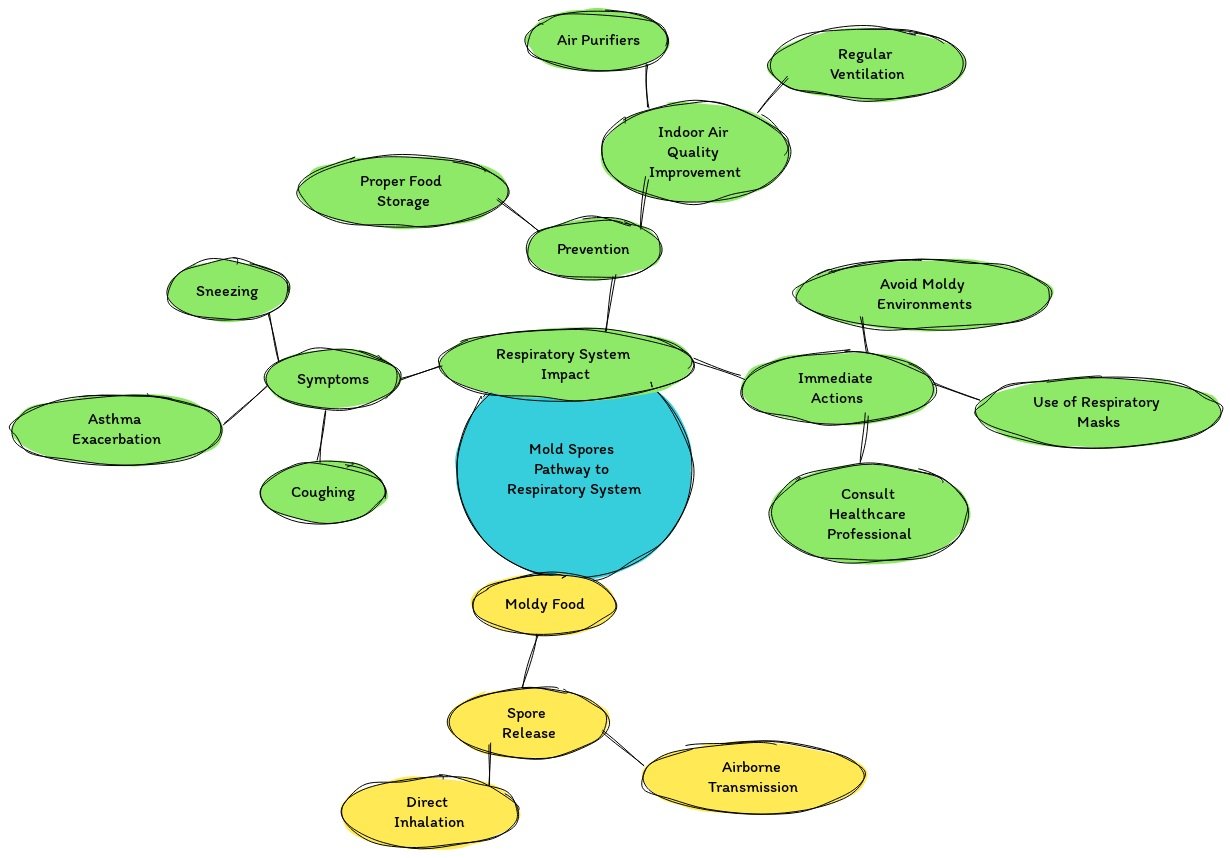
Moldy food doesn’t just pose a risk through ingestion; it can also affect air quality and lead to respiratory issues and complications when mold spores are inhaled. This exposure can aggravate existing respiratory conditions such as asthma and chronic obstructive pulmonary disease (COPD) and can also lead to the development of new respiratory problems, including allergic rhinitis, bronchitis, and in severe cases, fungal infections in the lungs. The symptoms of mold-related respiratory issues can range from mild to severe and often include coughing, wheezing, shortness of breath, and chest tightness. Individuals with compromised immune systems, the elderly, and children are particularly vulnerable to these effects.
Mold spores can become airborne from contaminated food when it is disturbed or when it begins to decompose. Therefore, it is essential to:
- Identify and dispose of moldy food immediately, without attempting to salvage parts that appear unaffected, as spores can spread beyond visible mold.
- Use air purifiers with HEPA filters in areas where food is stored to help remove mold spores from the air.
- Ensure kitchens and food storage areas are well-ventilated to reduce humidity levels, making environments less conducive to mold growth.
Preventing mold exposure is key to avoiding respiratory issues. This involves regularly checking food items for spoilage, cleaning refrigerators and pantries to prevent mold growth, and storing food properly. Individuals with pre-existing respiratory conditions should be especially cautious and might consider wearing masks when cleaning areas where mold presence is suspected.
Sign 3: Digestive Problems
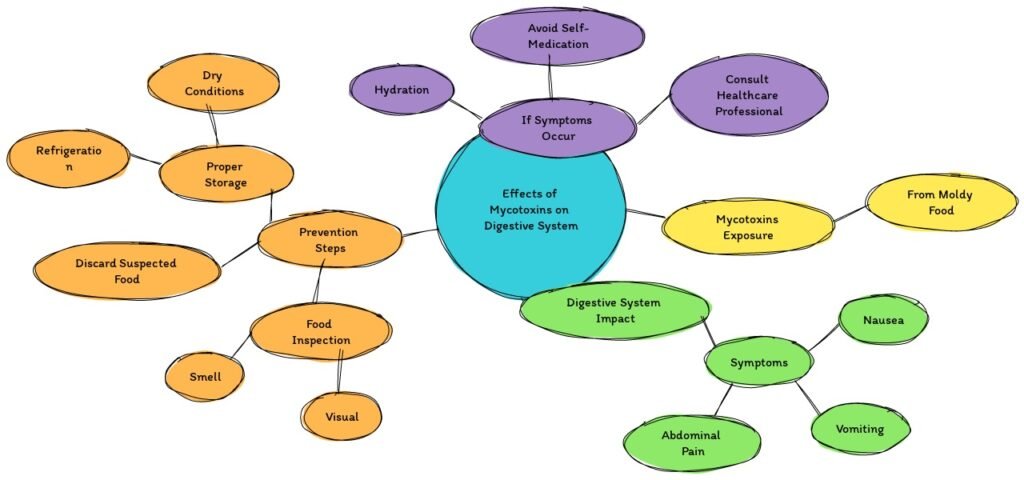
Ingesting moldy food can lead to a series of digestive problems, as mold contains various substances that are harmful when consumed. The most common digestive symptoms resulting from the consumption of moldy food include nausea, vomiting, diarrhea, and abdominal pain. These symptoms occur because certain molds produce toxins known as mycotoxins, which can irritate the stomach and intestines, leading to discomfort and, in severe cases, poisoning.
Mycotoxins are not destroyed by the body’s digestive process, meaning they can enter the bloodstream and cause systemic effects beyond the digestive system. However, the immediate concern is often the acute distress they cause to the gastrointestinal tract. For individuals with sensitive stomachs or pre-existing gastrointestinal conditions, the reaction can be more severe, leading to prolonged illness or necessitating medical intervention.
Preventing mold ingestion is key to avoiding these unpleasant and potentially dangerous symptoms. This involves:
- Inspecting food closely for signs of mold before eating, especially high-risk foods like bread, dairy products, and any perishables.
- Ensuring food is stored correctly, as improper storage increases the risk of mold growth. Refrigeration and airtight containers are effective strategies.
- Keeping kitchen areas clean to prevent mold spores from contaminating food.
It’s also vital to be aware of the difference between foods that naturally contain beneficial molds, like certain cheeses, and harmful mold growth on food. Understanding this distinction helps in making safer food choices.
For individuals who experience severe or persistent digestive issues after consuming food suspected to be moldy, seeking medical attention is crucial. Health professionals can provide the necessary treatment and guidance to manage symptoms and avoid complications.
Sign 4: Skin Irritations and Infections
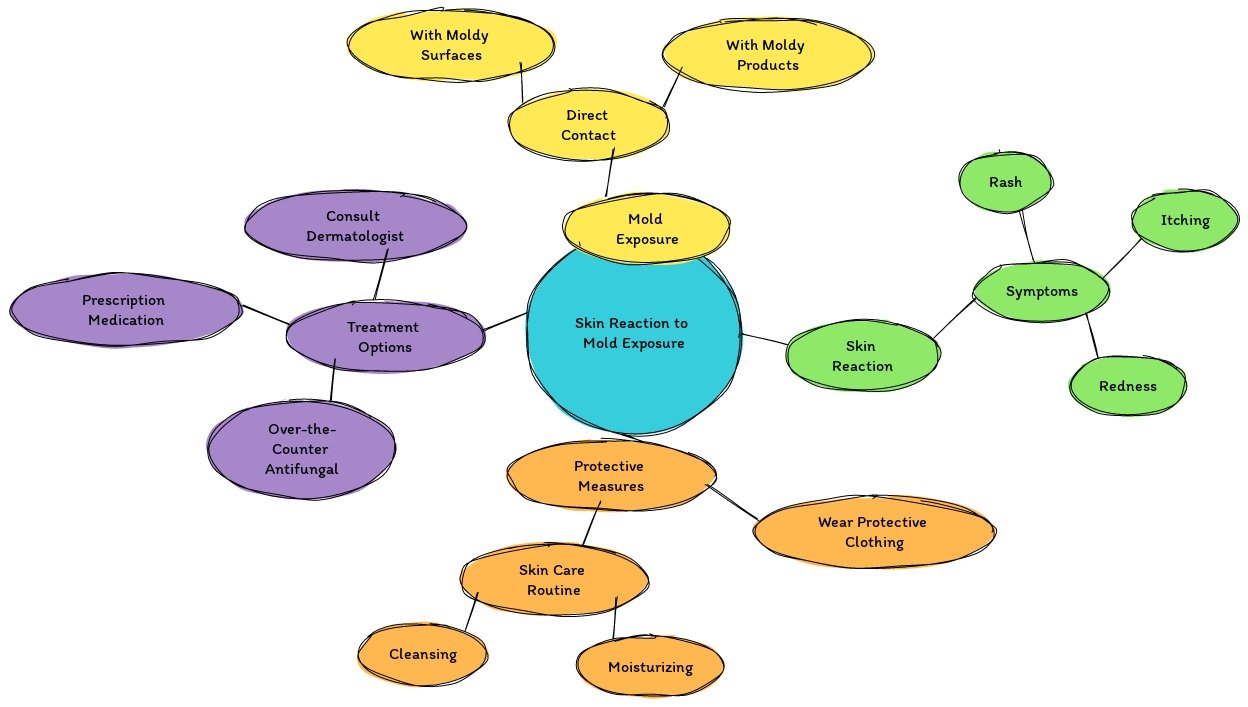
Skin irritations and infections can arise from direct contact with mold or through the ingestion of moldy food, manifesting as rashes, hives, or dermatitis. The skin, being the largest organ of the body, acts as a barrier against environmental hazards, but it can also be a reactive surface to toxins, including mycotoxins produced by mold. These reactions occur because the immune system identifies components of the mold as foreign, potentially harmful invaders, triggering an inflammatory response in the skin.
The symptoms of mold-related skin issues can vary widely, from mild irritations like redness and itching to more severe conditions such as eczema or blistering. In cases where the skin’s barrier is compromised, either from scratching or pre-existing cuts, mold can penetrate the skin, leading to infections. This risk is especially high in environments with high mold spore concentrations, like damp and poorly ventilated areas.
To mitigate the risk of skin irritations and infections from mold:
- Avoid handling moldy items with bare hands. Use gloves and wash hands thoroughly after touching moldy surfaces.
- Keep living environments dry and well-ventilated to prevent mold growth.
- Be cautious of moldy foods and discard any items that show signs of mold to avoid accidental ingestion, which can exacerbate skin reactions.
For individuals experiencing persistent or severe skin reactions that might be related to mold exposure, consulting a dermatologist or healthcare provider is advisable. They can offer treatments to alleviate symptoms and advice on avoiding further exposure.
Prompt attention to skin reactions and proactive measures to control mold in one’s environment can prevent the progression of symptoms and promote healing.
Sign 5: Prolonged Fatigue and Lack of Energy

Experiencing prolonged fatigue and a persistent lack of energy can be a perplexing and frustrating condition for many. When these symptoms are traced back to mold exposure, either through ingestion of moldy food or inhalation of mold spores, the situation becomes even more complex. Mold exposure can lead to a systemic response in the body, with mycotoxins affecting the immune system and potentially leading to chronic fatigue syndrome. This condition is characterized by extreme fatigue that doesn’t improve with rest and can severely impact an individual’s quality of life.
The mechanism behind this reaction involves the body’s immune response to foreign invaders such as mold spores or mycotoxins. This response requires energy, and when the exposure is constant or the body’s detoxification processes are overwhelmed, resources are diverted away from normal functions to fight off these invaders. Over time, this can result in a state of chronic fatigue, where even basic activities become exhausting.
To address and mitigate the impact of mold exposure on energy levels:
- Identify and eliminate mold sources in your environment to reduce exposure. Regular inspections and maintenance of damp areas, such as bathrooms and kitchens, can prevent mold growth.
- Improve indoor air quality through adequate ventilation and the use of air purifiers, particularly those designed to filter mold spores.
- Consult healthcare professionals for testing and treatment if mold exposure is suspected as the cause of chronic fatigue. Detoxification strategies and supportive therapies can help alleviate symptoms.
Understanding the link between mold exposure and fatigue is the first step towards regaining energy levels and improving overall health. By taking proactive measures to control mold in one’s environment and seeking professional advice when needed, individuals can significantly reduce the impact of mold on their lives.
Sign 6: Neurological Symptoms
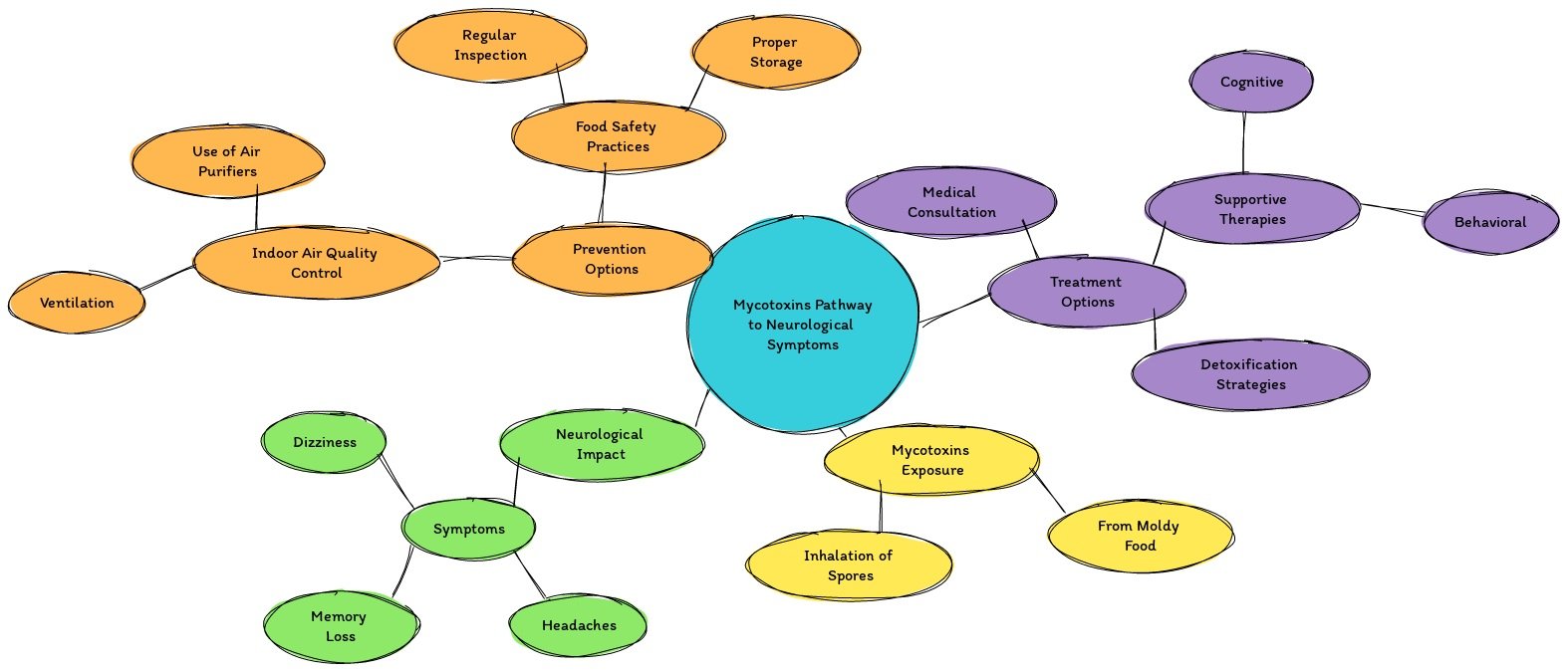
Exposure to mold, particularly through the inhalation of mold spores or the ingestion of mycotoxins present in moldy food, can lead to a range of neurological symptoms that might seem unrelated at first glance. These symptoms include headaches, dizziness, memory problems, concentration difficulties, and in more severe cases, seizures. The underlying mechanism involves the toxins produced by certain molds, such as aflatoxins, which are capable of crossing the blood-brain barrier, a protective shield intended to keep harmful substances away from the brain. Once these toxins enter the brain, they can disrupt normal neurological function, leading to the symptoms mentioned.
The severity and onset of neurological symptoms can vary widely among individuals, depending on factors like the duration and extent of mold exposure, individual susceptibility, and overall health status. Some people may experience mild, transient headaches, while others might suffer from more debilitating cognitive impairments.
To mitigate the risk and impact of neurological symptoms related to mold exposure, consider the following steps:
- Eliminate mold sources from your living or working environment to reduce exposure. This may involve professional mold remediation services in cases of extensive contamination.
- Ensure good indoor air quality through effective ventilation and, if necessary, the use of air purifiers designed to capture mold spores.
- Seek medical attention if you experience persistent neurological symptoms. Healthcare professionals can conduct tests to evaluate the potential impact of mold exposure and recommend appropriate treatment strategies, including detoxification and supportive therapies to alleviate symptoms.
Addressing mold exposure as a potential cause of neurological symptoms is crucial for preventing long-term health consequences. By taking proactive measures to control mold in your environment and consulting with healthcare providers when symptoms arise, you can protect your neurological health and well-being.
Sign 7: Food Poisoning Symptoms
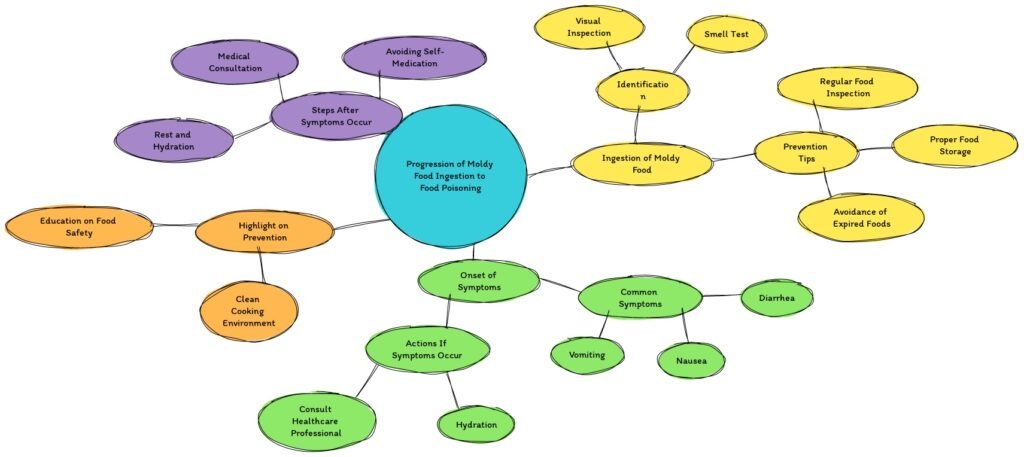
Consuming moldy food can lead to food poisoning symptoms, which are the body’s reaction to ingesting harmful substances produced by mold, such as mycotoxins. These symptoms often include nausea, vomiting, diarrhea, stomach cramps, and fever, mirroring the body’s attempt to expel the toxins. While most people associate food poisoning with bacteria, such as Salmonella or E. coli, molds present on spoiled food can also be a significant culprit. The severity of symptoms can vary based on the amount of contaminated food consumed, the type of mold involved, and the individual’s overall health and immune system strength.
Unlike bacteria that can be killed through proper cooking, mycotoxins produced by molds are heat stable and can remain in food even after cooking, making it crucial to identify and discard moldy food before it’s consumed. To reduce the risk of mold-related food poisoning, adhere to the following guidelines:
- Regularly inspect perishable foods for signs of spoilage and mold growth, especially items like bread, cheese, fruits, and vegetables, which are prone to mold.
- Practice good food hygiene, including proper storage and handling, to prevent mold growth and contamination.
- Be aware of the smells and appearances that indicate food spoilage, and err on the side of caution by discarding any food that looks or smells off.
In cases where food poisoning symptoms arise after consuming moldy food, staying hydrated is critical, as vomiting and diarrhea can lead to dehydration. If symptoms persist or worsen, seeking medical attention is necessary to prevent complications and receive appropriate treatment.
Sign 8: Mood Swings and Mental Health Effects
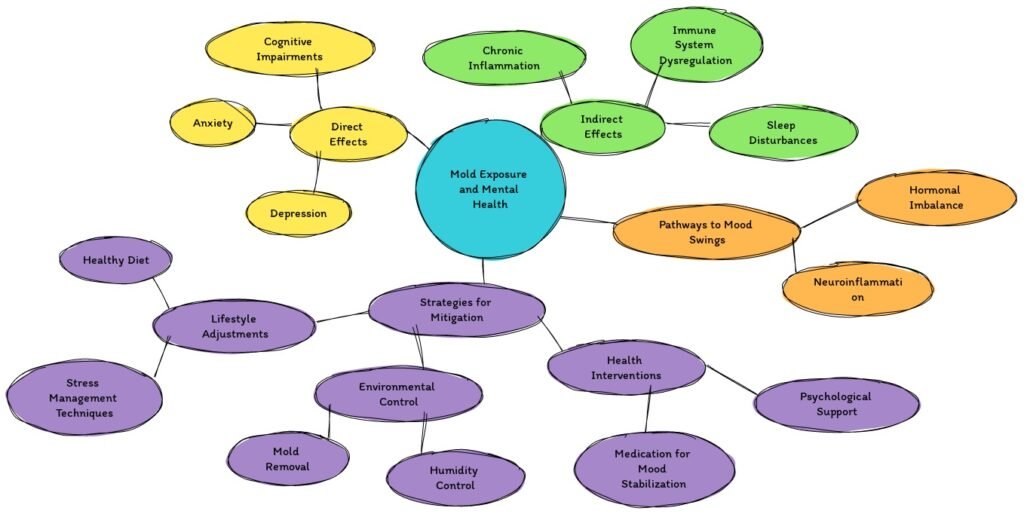
Exposure to mold can have a significant impact not only on physical health but also on mental well-being, leading to mood swings and other mental health effects. The connection between mold exposure and mental health is complex, involving both direct and indirect pathways. On a direct level, the inhalation of mold spores and the ingestion of mycotoxins can affect the brain and nervous system, potentially leading to neurological changes that manifest as mood disturbances, anxiety, and depression. Indirectly, the physical stress of dealing with chronic mold-related health issues can exacerbate or trigger mental health problems, creating a cycle of physical and emotional distress.
Mood swings related to mold exposure can range from irritability and short temper to significant fluctuations between happiness and sadness. These mood changes can be confusing and distressing for both the individual experiencing them and for their loved ones. Anxiety and depression may arise not only from the direct impact of toxins on the brain but also from the stress and isolation that often accompany chronic health issues.
Addressing the mental health effects of mold exposure requires a multi-faceted approach:
- Removing the source of mold exposure is critical to alleviate both physical and mental health symptoms. This may involve professional mold remediation efforts in affected areas.
- Seeking support from mental health professionals can provide strategies to manage mood swings and other psychological symptoms. Therapy, counseling, and, in some cases, medication can be effective in stabilizing mood and improving overall mental health.
- Implementing stress-reduction techniques such as mindfulness, exercise, and healthy sleep habits can help mitigate the impact of stress on mental well-being.
Understanding the potential for mold exposure to affect mental health is an important step in addressing the full scope of symptoms and ensuring comprehensive care for affected individuals.
Caption for required illustration: “Diagram illustrating the direct and indirect effects of mold exposure on mental health, including pathways to mood swings and strategies for mitigation.”
Why Bio On is Your Food Mold Solution
Bio-On stands as your definitive solution for combating mold-related issues, backed by our extensive expertise and comprehensive service offerings. Specializing in mold remediation, we employ state-of-the-art techniques and technologies to identify, treat, and eliminate mold at its source, ensuring a safe and healthy environment for you and your loved ones. Our team of certified professionals is equipped to handle a wide range of scenarios, from residential to commercial spaces, delivering tailored solutions that meet your specific needs. By choosing Bio-On, you’re not just getting a mold cleanup service; you’re investing in peace of mind, knowing that your property is in the hands of experts dedicated to maintaining the highest standards of health and safety.
Conclusion
Understanding the diverse signs of mold exposure is crucial for safeguarding your health and well-being. From allergic reactions to neurological effects, the impact of mold can be profound and far-reaching. Taking immediate action by identifying and eliminating mold sources is essential. For comprehensive mold remediation and expert advice, contact Bio-On. Our team of specialists is ready to provide you with the support and solutions you need to address mold issues effectively. Don’t let mold compromise your health or comfort. Reach out to us through the WhatsApp button for a free consultation, and take the first step towards a mold-free environment.








